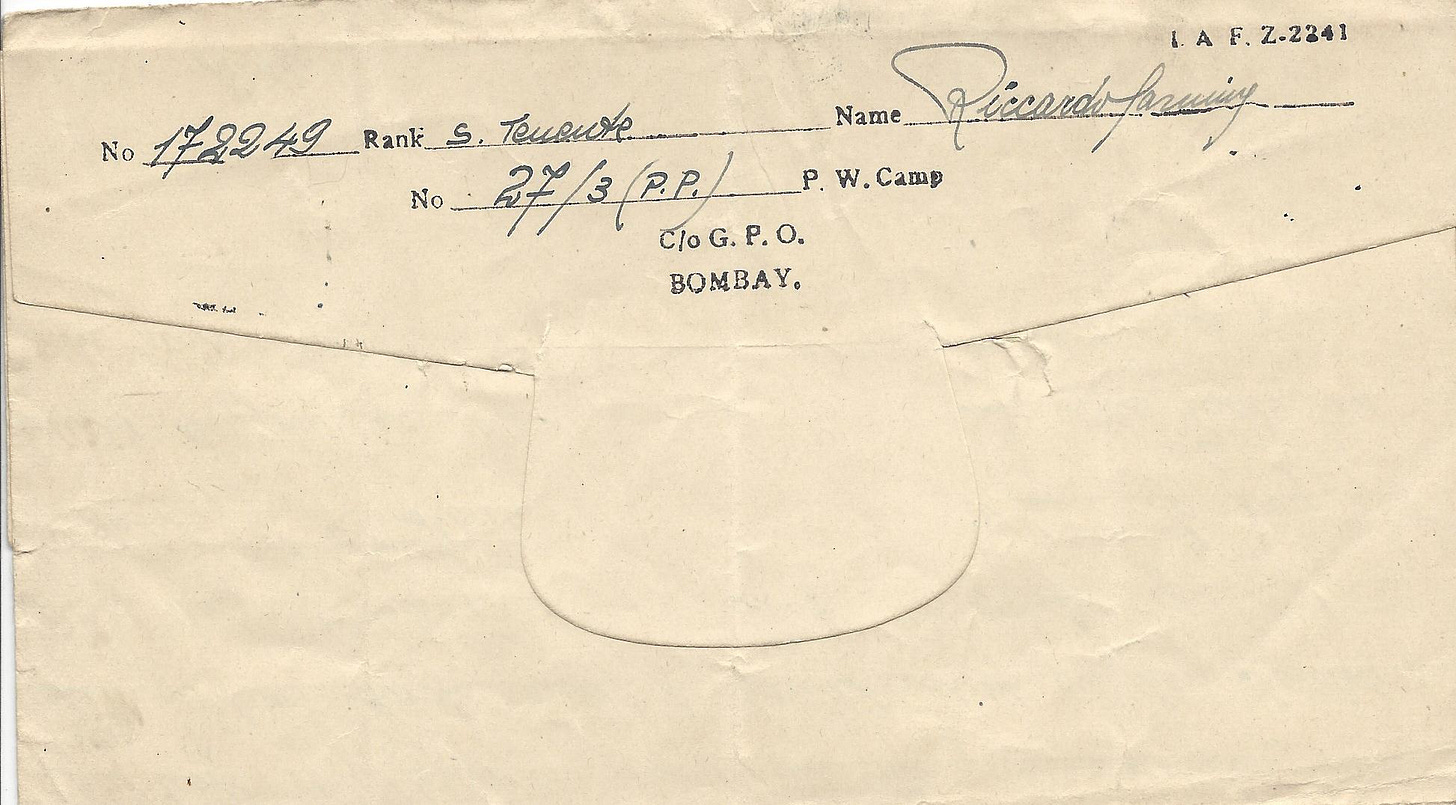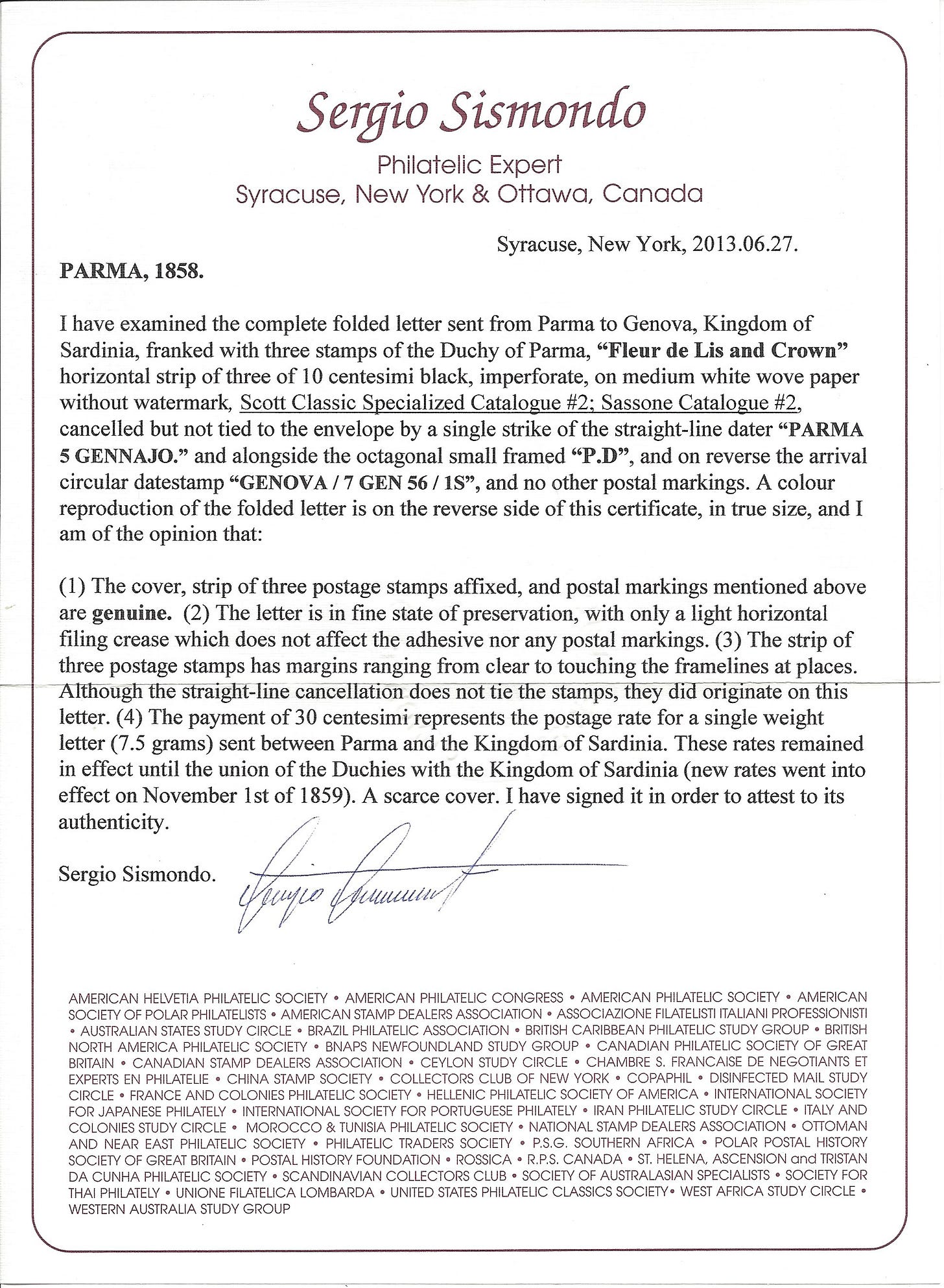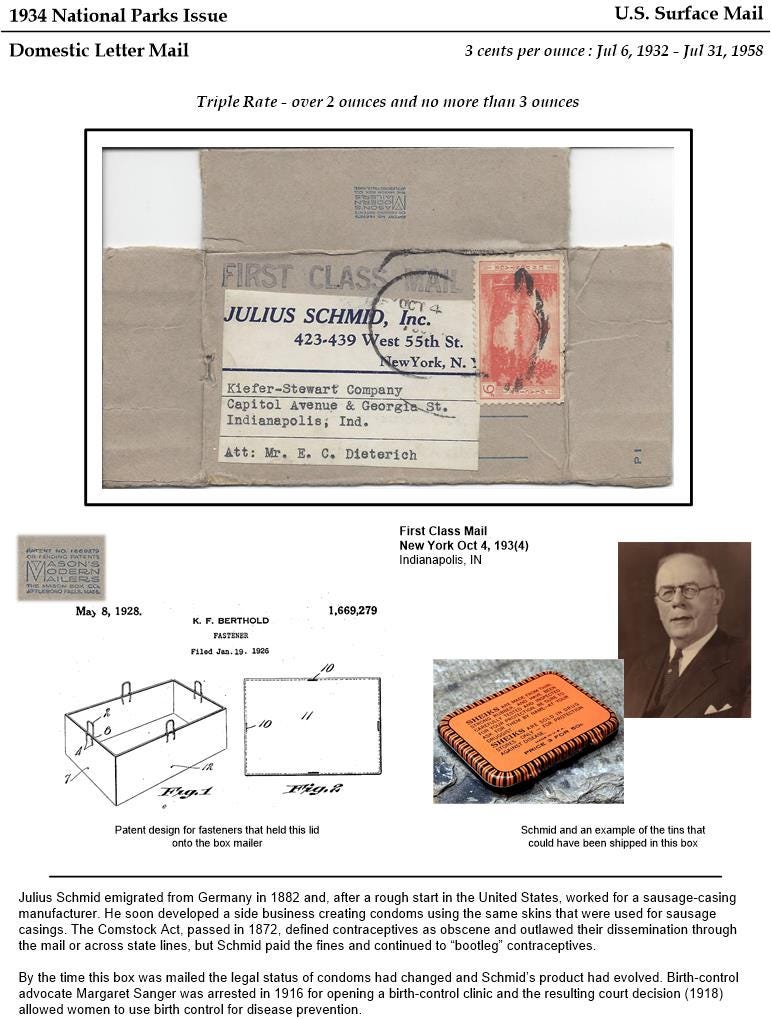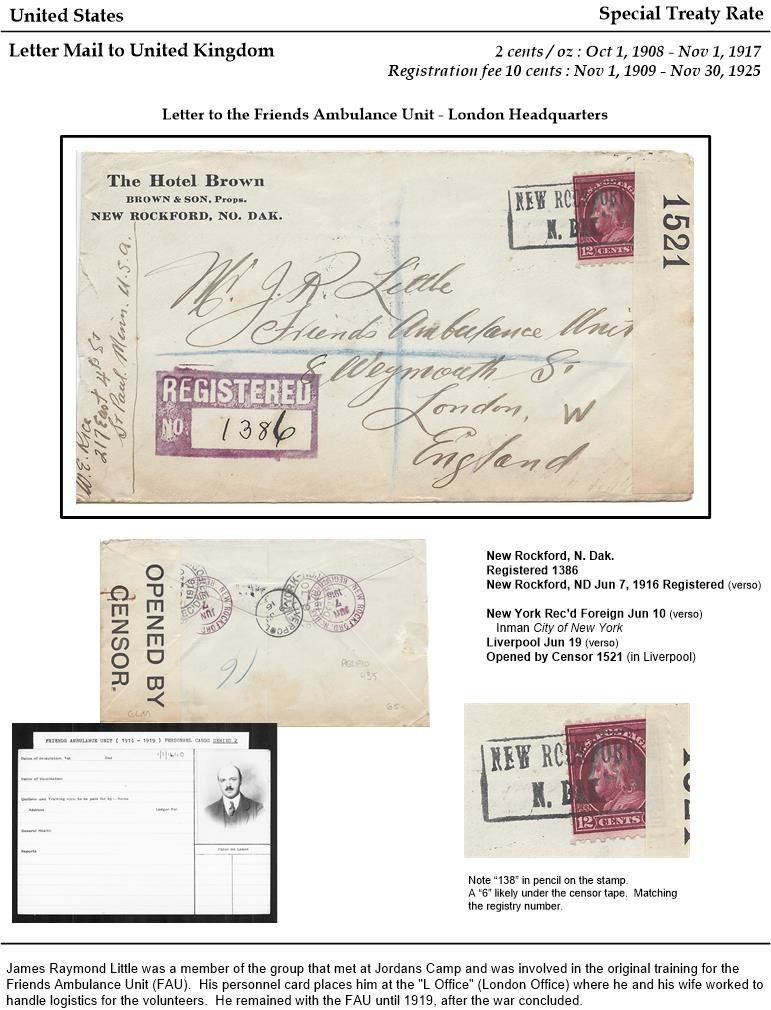I’ve had a lot on my mind recently and when that happens, I find it difficult to really dig into a particular topic when I write. Although, I was able to get the topics of local egg production, local sales and Avian Influenza out of my head and into words on the Genuine Faux Farm blog early this week.
I guess that shows that I should be able to manage a weekly article for Sunday. Right?
The answer is, of course I can! I actually liked the idea of following a format similar to PHS #226 for this week and put together some shorter pieces for a few different covers. Some of these might lead to a more in depth article in the future and others will get as far as they will ever go today.
And now for your weekly reminders.
Everyone is welcome here, whether you know a lot or a little about postal history - I try to write so everyone might find something to enjoy. Take a moment and prepare yourself by tying some heavy weights to your troubles so they can sink into the deepest body of water you can imagine. Once they are out of the way, put on your fuzzy slippers, grab a favorite beverage and settle in to your comfy reading space.
It’s time for Postal History Sunday!
Five Years a Prisoner
“Dear Ritty,
I liked very much the snapshots you have sent me in your last letter. I received them while I was in a very bad mood. It has now the 5th year that I have been a P.O.W. and the thought that my best years, wasted in this camp, had embittered me.”
Sometimes the most interesting characteristics of a piece of postal history are the contents. In this case, it is a poignant reminder that the people who sent and received letters that we collect and analyze from years past were more than a few vital statistics. They aren’t just birth and death dates, service records, or job titles. They were people like Riccardo, sometimes stuck in a situation not entirely of their own making, hungrily reaching for connections outside their circumstances. People who placed great importance on news from family and pictures of people they could not see in person.
Riccardo was an Italian Prisoner of War who was probably taken by British, Indian and Australian forces early in 1941. During the first two months of that year, nearly 95,000 Italian military personnel were taken prisoner. These individuals were eventually delivered to prison camps in India, Australia, Africa, and the US.
Most, but not all, POWs during World War II were allowed access to mail services so they could maintain contact with family during their captivity. Forms, like the one shown here, were provided so that letters could be easily identified and opened for inspection.
While Riccardo’s letter is clearly focused on daily life and personal connections, the mail could also provide a prisoner with opportunities to share information that could be used against his captors. This particular letter has three censor markings, DHP/2, DHP/254, and 12,708 US Censor, that can be seen on the front of this cover. This provides us with evidence that this letter was opened and inspected more than once.
Our letter writer was sent to one of a group of five camps that were named YOL (Your Own Lines) near Dharamsala on the edge of the Himalayas. By looking at the back of the cover, we can see that Riccardo was part of Camp 27. It is possible he was at this camp the for the entire period of his internment as his letter suggests. But, the brief histories I have found thus far indicate that most prisoners were moved from site to site and very few stayed in one location for the duration of their captivity.
A large number of Italians captured in North Africa in early 1941 were taken to Bombay. They disembarked in groups of fifty and were paraded through Bombay (as can be seen with the perod footage shown above) before being taken to one of 29 different camps.
These camps were rapidly constructed in 1940, and, of course, had some of the normal trappings of a prison camp - including barbed wire. However, it was the unfamiliarity with the native languages and the distance from any known source of aid that kept the Italians in place more than anything.
Once Italy surrendered to the Allied forces in 1943, many Italian POWs were allowed some freedom to go to local villages. They were even given opportunities to go mountain climbing on some of the nearby peaks.
India served an interesting role during World War II, providing locations to detain Italian (and other) Prisoners of War, but it also afforded refuge for Jewish migrants and Polish refugees. And, just as the US moved persons of Japanese heritage to internment camps, Germans and Italians that happened to be in India (including mountain climbers) at the outbreak of hostilities were also held in these camps.
This cover could certainly become a full article on its own as there is still much that could be learned with additional research. For example, if I can decipher Riccardo’s last name with more certainty, I might be able to find out more about him - including where he served and when he was released from YOL.
I could also spend more time researching the censorship processes and the postal markings applied during that process - a topic for which I only know the basics. For that matter, the whole subject of POW mail in WWII is worthy of detailed study. For example, Michael O’Hagen has some writing available on mail from POWs in Canada during WW II.
Recognizing Expertise
One theme for today’s Postal History Sunday is how important it is to understand the difference between acquiring basic knowledge, having working competence, and achieving expertise in a subject. This is especially important for me to understand as I attempt to write an article every Sunday.
I have only basic knowledge of World War II POW postal history. So, it is important that I check and verify everything I write in hopes that I can reach working competence and provide you with accurate (and hopefully interesting) information. When we move back to the 1850s and 1860s for Europe, I enter a realm of working knowledge with areas of *gasp* actual expertise.
Which brings me to this folded letter sent from Parma on January 5, 1856. The postage of 30 centimes is paid by three 10 centesimi Parmese postage stamps which properly paid the rate for a letter to go from the Italian Duchy of Parma to the Kingdom of Sardinia (also known as Piedmont).
At the time this letter was sent, Italy was not a unified entity. Instead, there were several separate Italian States with different affiliations. The Kingdoms of Lombardy and Venetia were under the control of the Austrian Empire. The Papal States, controlled by the Catholic Church accounted for most of central Italy. Modena, Parma and Tuscany all had strong ties to the Austrians while Piedmont/Sardinia had stronger ties to the French. Then there were the Two Sicilies in the south. And they all had their own postal services.
The complex nature of the politics during that time leads to complexity in the postal history, making it a difficult topic to fully understand. Which is why I would say that I have decent working knowledge of the area, but I will not claim great expertise.
On the other hand, there are those who have the experience, resources and will to acquire expertise in all sorts of areas of philately and postal history. Sergio Sismondo, who recently passed away, had a command of Italian area postal history, which explains why a certificate by this individual holds some value to me today. Unlike many who certify the genuineness of philatelic items, Sismondo typically provided more information, including confirming the postage rate in this case.
This particular cover has not (yet) inspired me to pursue it beyond what I have written today. It is a very nice example of a simple letter between Parma and Sardinia for that time. But, there doesn’t appear to be a compelling story line that is begging me to start digging. The addressee was likely a member of a historically prominent family (Serra) in Genoa but the letter contents are brief and, unlike the POW letter, are not inspiring me to search much further.
But, who knows? Inspiration can come from many places and I won’t say “no” if it includes this cover.
Personal Connection for the Win
I have mentioned the fact that sometimes a personal connection can provide value for a particular piece of postal history. It doesn’t matter how trivial that connection might seem to someone else as long as it holds meaning for me.
And yes, that holds true for things you happen to like. I don’t have to fully understand it and don’t even have to agree with it. It just is. If it makes you happy, I’ll celebrate it with you.
Shown above is a heavier folded letter sent from Burton-on-Trent in December of 1844 to Manchester, England. The postage rate at the time was two pence per ounce, with a special rate for simple (lighter) letters of 1 penny for a letter up to 1/2 ounce in weight. This letter must have weighed more than one ounce, so it required 4 pence in postage.
If you are wondering how I figured the origin and destination out, here are the postmarks on the back that fill in those blanks:
Once again, this is a nice cover that very clearly illustrates a heavy piece of domestic letter mail in the 1840s. If that was all there is to this letter, I think that would be good enough.
But, why does this particular piece of postal history hold a special attraction for me? I can tell you that it has nothing to do with the contents, nor the addressees Hitchcock, Buckley & Tidswell, who were solicitors (lawyers) in Manchester at the time. The letter didn’t appear to go on a Merry Chase, since it arrived the next day at Manchester after traveling about 75 miles.
It didn’t even go to another country, which is something I seem to favor.
What it did have was a connection to my own name.
Believe it or not, it is simply because my initials “RF” are the position letters for the left postage stamp on the cover. That’s it.
The first couple series of postage stamps issued by the British featured Queen Victoria and were printed in sheets of 240 stamps. Each position of that sheet was given a pair of letters representing the row and the column the stamp was located on in that sheet. So, this stamp was in the 18th row (R) and 6th column (F).
But that detail doesn’t really matter to me. All that matters is that it has MY initials. I was extremely happy when my partner, Tammy, took the time to find it and purchase for me as a gift.
How strange that an old piece of paper could carry so much happiness in the form of two small letters on the corner of one of the postage stamps attached to it. It doesn’t have to make sense. It just is.
Now, before you think I am alone in this silliness, many collectors take some joy in finding stamps from this series with initials that are personal to them. However, there are few that can top the madness achieved by Chip Gliedman, who has an entire exhibit showing all the variations he can find with his initials! Not only does he extract the joy of finding items with his initials, he also uses it to dive into an area and build his own expertise on a popular stamp collecting/postal history subject area.
Displaying Treasures
A very astute reader asked if I actually took the time to make display pages for some of the covers I highlight in Postal History Sunday. They correctly identified how difficult it must be to decide exactly what information to include on a single page after I write an entire article about a cover.
Shown above is that I decided to do with the box that I featured in PHS #218, the Case of the Doanwanna. I am not certain that I came up with the optimal solution, but I am pleased with it as it is - so it will be good enough.
My first order of business was to determine who the audience was with this display page. Happily, that was fairly simple. I was the primary audience.
I selected the interesting facts and images that made this particular piece of postal history come alive for me. I put it together so that the “me in the future” that will look at it can experience some of the enjoyment I had as I researched this particular item. I also recognized that I won’t perfectly remember everything months or years from now. So, I tried to include enough information that I could relearn as quickly as possible.
Now, if it happens that I share this display page with other people and they enjoy it too, that’s a wonderful bonus.
I have appreciated the opportunity to build pages for several of the covers that have taken me on excellent Postal History Sunday journeys. This is a reward that encourages me to keep exploring and to treasure the learning and sharing process.
My most recent display page build is shown above and features the highlighted cover in PHS #219, Friends in Need.
Like the “Doanwanna” box, this particular item does not illustrate a rare rate or route. It didn’t command much attention in the postal history dealer’s box when I saw it for the first time. But, the puzzles it provided and the stories it led to were immensely gratifying - making it worthy of it’s own page.
Thank you for joining me today. Have a fine remainder of your day and an excellent week to come.
Postal History Sunday is featured weekly on this Substack publication. If you take this link, you can view every edition of Postal History Sunday, starting with the most recent publication. If you think you might enjoy my writing on other topics, I can also be found at the Genuine Faux Farm substack. And, some publications may also be found under my profile at Medium, if you have interest.














Yeah! The RF made it to PHS! 😁